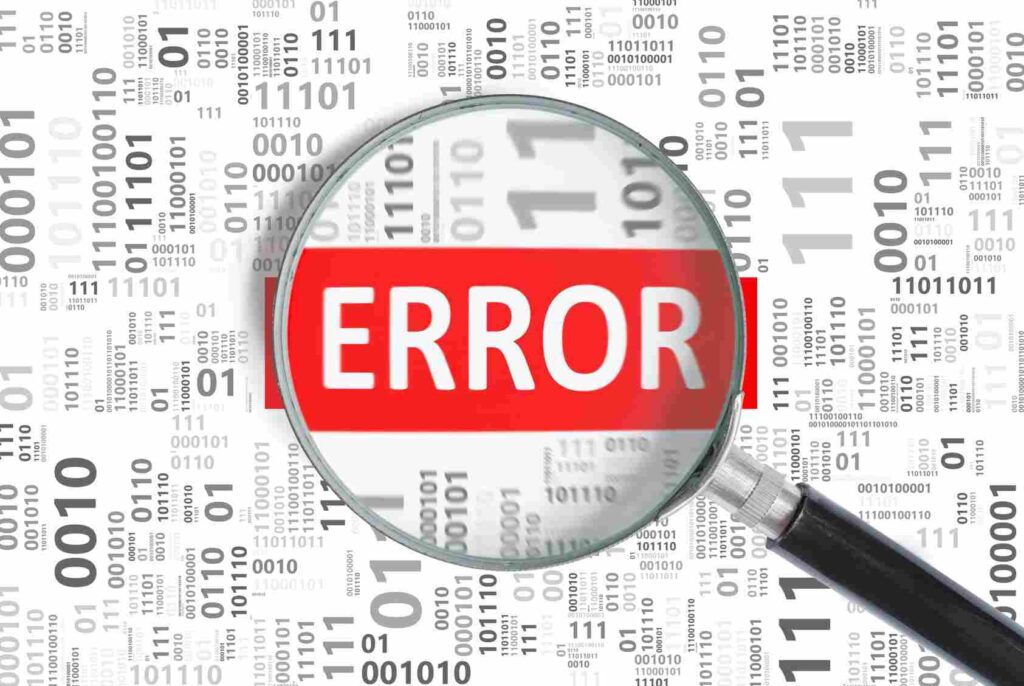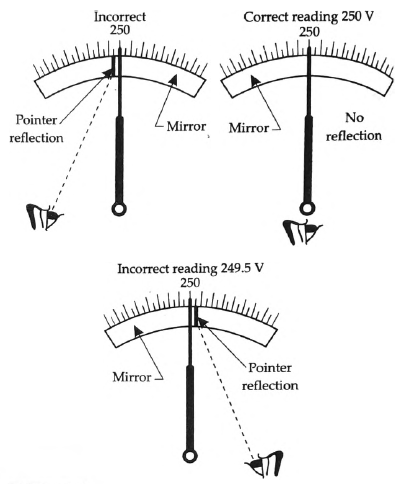Introduction
In our everyday lives, as well as in scientific experiments, industries, laboratories, and even in classrooms, we often need to measure things or collect data. But no matter how careful we are or how good our instruments are, we may still face differences between what we measure and what the actual value should be. These differences are called errors. Errors are common, and understanding them helps us to be more accurate and reliable.

In the simplest terms, it is the difference between the measured value and the actual or true value. It doesn’t always mean something is wrong it just means that something is slightly off due to limitations or unexpected factors. Learning about errors helps students, researchers, workers, and professionals do a better job and get closer to the truth in their results.
This guide will explain in easy language what errors are, the different types of errors, where they come from, and how we can reduce or control them. We’ll break it down step by step, so it’s easy to follow and apply.
Table of Contents
Definiton
An error happens when the value we observe, record, or measure is different from the real or true value. It’s important to know that an error is not always a mistake. A mistake might come from being careless or not paying attention. On the other hand, can happen even if we do everything carefully. This is often because our tools are not perfect, or there are small changes in the surroundings that affect our results.
For example, if a thermometer shows that a liquid is 38.2°C, but the actual temperature is 38.0°C, the error is 0.2°C. This doesn’t mean we did something wrong—it’s just a small difference due to the tool or conditions.
Types
There are many types of errors. They can be grouped based on where they come from or how they behave. Let’s go over the main types of errors with simple explanations and examples.

1. Systematic Errors
Systematic errors happen in a regular and predictable way. They are often caused by a problem with the tools or the method we are using to measure. Because these errors are consistent, they affect the results in the same way each time.
Causes:
- Faulty instruments: The tool may be old, damaged, or poorly made.
- Improper calibration: The tool may not be set up correctly to give accurate readings.
- Human habits: A person may make the same error repeatedly without noticing.
Examples:
- A digital scale that always shows 2 grams more than the true weight.
- A thermometer that always reads 1°C lower than it should.
- A clock that is always 5 minutes fast.
Characteristics:
- These errors happen every time and follow a pattern.
- They are often easy to spot if checked properly.
- They can usually be fixed or adjusted.
Control:
- Regularly check and calibrate tools.
- Use higher-quality instruments.
- Give proper training to people who use the equipment.
2. Random Errors
Random errors are unpredictable. They happen without any regular pattern. These errors are caused by unknown and uncontrollable factors that vary from one measurement to another.
Causes:
- Environmental changes: Changes in temperature, humidity, or light.
- Slight differences in observation: People see or judge things a bit differently.
- Electronic noise: Machines and instruments may pick up background signals that affect results.
Examples:
- Measuring a liquid’s volume and getting slightly different results each time.
- Getting different stopwatch times when measuring a runner’s speed, even if everything else is the same.
Characteristics:
- They are not consistent and do not follow a pattern.
- These errors affect the accuracy of the data.
- They are always present but can be reduced.
Control:
- Take many measurements and calculate the average.
- Use digital instruments to reduce human judgment.
- Keep the environment stable when measuring (same room, lighting, etc.).
3. Gross Errors
Gross errors are big and obvious mistakes. They usually happen because of human error, carelessness, or failure of equipment.
Causes:
- Reading the instrument incorrectly.
- Writing down the wrong number.
- Using a tool that is broken or damaged.
Examples:
- Misreading 60g instead of 6g on a scale.
- Writing 25.0 instead of 52.0.
- Using a thermometer with a broken sensor.
Characteristics:
- These errors are large and very noticeable.
- They can lead to results that are completely wrong.
- They are avoidable with proper care.
Control:
- Always double-check readings and data.
- Follow a checklist or step-by-step guide.
- Make sure all tools and machines are working properly.
4. Absolute and Relative Errors
These are ways to express the size of an error.
- Absolute Error = |Measured Value – True Value|
- Shows the actual difference, for example: Measured = 10.5, True = 10.0 → Absolute Error = 0.5
- Relative Error = (Absolute Error / True Value) × 100%
- Shows the error as a percentage, for example: (0.5 / 10.0) × 100% = 5%
Using these helps us understand how big the error is compared to the actual measurement.
Sources of Errors
Errors don’t just happen out of nowhere. They come from certain sources. Knowing these helps us prevent them.
1. Instrumental Errors

These happen because the measuring tool is not perfect or is not working correctly.
Examples:
- A ruler with worn-out markings.
- A thermometer that doesn’t give accurate readings.
- A digital scale that malfunctions.
2. Environmental Errors
The surrounding environment can affect the accuracy of measurements.
Examples:
- Heat or cold changing the shape of objects.
- Wind blowing the measuring tape.
- Dust blocking sensors.
3. Observational Errors
These errors happen because people misread or misjudge the tools.
Examples:
- Looking at a needle on a scale from an angle.
- Not waiting for a digital screen to stabilize.
4. Theoretical or Modeling Errors
When we use formulas or theories to make calculations, sometimes they’re not perfect or too simple.
Examples:
- Ignoring air resistance when calculating how fast something falls.
- Assuming a flat surface when it is slightly curved.
5. Sampling Errors
When we collect data from a small group instead of the whole, we might get results that don’t reflect the true average.
Examples:
- Asking only young people in a city to estimate the overall health of the population.
- Measuring just a corner of a large field and applying the result to the whole area.
How to Control and Reduce Errors
Though we can’t stop errors completely, we can take many steps to reduce them.
1. Instrument Calibration
Make sure all instruments are set correctly and checked regularly.
2. Proper Training
Teach people how to use equipment properly and read measurements carefully.
3. Standard Procedures
Follow the same method every time so results are more consistent.
4. Repetition
Take the same measurement multiple times and calculate the average.
5. Environmental Control
Try to keep the environment steady same room, same lighting, same temperature.
6. Use Digital Tools
Digital instruments are less likely to be affected by human error.
7. Cross-Checking
Check results using another instrument or method for accuracy.
Importance of Understanding Errors
Errors matter because they affect how much we can trust the results of our work.
- In science, errors help us understand the limits of experiments.
- In engineering, small errors can make big machines fail.
- In medicine, accurate measurements can be the difference between correct and incorrect diagnosis.
- In industry, controlling errors means better products and fewer defects.
Real-Life Examples of Errors
- A GPS shows the wrong location because of a signal delay.
- A blood pressure machine gives slightly different readings each time.
- A person types 120 instead of 102 when entering data.
- A thermometer shows incorrect temperature because it was not checked properly.
Conclusion
Errors are everywhere, and they’re a part of almost every activity involving measurements or observations. But instead of being afraid of them, we can understand them, learn from them, and take steps to reduce them. By doing so, we make our results more reliable, our tools more useful, and our decisions more accurate. Whether you are a student, a scientist, or someone who just wants to measure things better, understanding errors will help you do a better job.
Three Key Summary
- Errors happen in all measurements, but we can understand and reduce them.
- Different types of errors—systematic, random, and gross—come from different causes and need different solutions.
- Controlling errors helps us make better decisions, whether in science, medicine, industry, or daily life.
FREQUENTLY ASKED QUESTIONS
What is the difference between error and mistake?
An error is a small difference caused by natural or technical limits. A mistake is something that happens because of human carelessness or lack of attention.
Can all errors be eliminated?
No, but many can be reduced or controlled to a very small amount.
What is parallax error?
It is an error that happens when you look at a measurement tool from the wrong angle, making the reading look higher or lower than it is.
Related Articles




